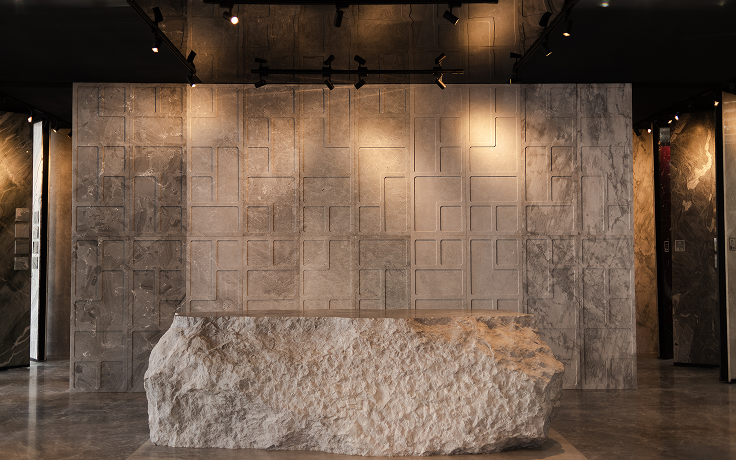Great works and projects that use natural stones
The history of architecture cannot be told without mentioning natural stones. The stones are not only construction elements, but also bearers of valuable information about the history, technology, culture and society of the times in which they were used.
Several classic and iconic works in the world incorporate ornamental stones in their constructions, highlighting the diversity of techniques and materials available throughout human history. Check out some examples:
Taj Mahal (India)
The Taj Mahal, an iconic mausoleum located in Agra, India, is classified by UNESCO as a World Heritage Site and also one of the Seven Wonders of the Modern World. Built between 1632 and 1653, the white marble monument was erected in memory of Aryumand Banu Begam, favorite wife of Emperor Shah Jahan.
As the story goes, the palace was built as a way to honor 'Mumtaz Mahal' (or "The Jewel of the Palace"), as Aryumand was known, who died after giving birth to her 14th child. The marble used in the Taj Mahal is known as Makrana, which is extracted from the region that bears the same name as the stone, in the state of Rajasthan, India.

By all accounts, the marble was carefully carved to create the intricate architectural and ornamental details that adorn the monument. The richness of detail is impressive.
In addition to white marble, other precious and semi-precious stones were also used for inlays and decorative details in the palace, including jasper, agate, coral, lapis lazuli and turquoise.

Great Wall of China (China)
The impressive Wall of China is about eight thousand kilometers long and was created by order of the first Chinese Emperor Qin Shihuang, in the 3rd century BC, to defend the region from nomadic invaders from North Asia.
Construction of the Great Wall spanned several dynasties for centuries. Due to differences in materials, relief conditions, projects and construction techniques, and even the military situation experienced by each dynasty, the sections of the wall vary.

Most sections of the Wall—particularly in areas where strength was critical—were built using a combination of stones and packed earth. Granite, limestone and sandstone were some of the types of stones used. Due to its incredible history and majestic architecture, the monument is considered one of the Seven Wonders of the Modern World.
Colosseum in Rome (Italy)
The Coliseum, also known as the Flavian Amphitheater, is one of the greatest symbols of Italian architecture. The monument was built under Emperor Vespasian in 72 AD and was completed in 80 AD under his successor and heir, Titus.
The construction is based mainly on concrete, bricks and stones - such as marble, travertine, tiles and tuff (limestone with large pores).

The story goes that the hardest and most resistant stones were used in the most important parts of the structure. Travertine, for example, which has a unique texture and appearance, was used to cover the external façade of the Coliseum.
Travertine was also used to create the columns and architectural decorations of the monument.
The construction was included by Unesco in the list of World Heritage Sites and also elected, in 2007, as one of the Seven Wonders of the Modern World.
Saint Peter's Basilica (Vatican)
St. Peter's Basilica in the Vatican is the largest and most important Catholic religious building in the world. The construction of the temple involved a wide variety of materials over the centuries, due to its prolonged elaboration and the different architectural styles incorporated. The main and most present material used in the construction of the basilica is marble.

The stone was used to cover floors, walls and columns, in addition to serving as raw material for sculptures and statues signed by masters of the Renaissance era such as Michelangelo.
Among the different types of marble that were used to create a rich and diverse appearance in the basilica, we can highlight: Carrara marble, Paonazzetto, Botticino, Seravezza, Siena marble, Verde Antico, Portasanta and others.
Granite was also used on site, mainly in structural elements and to create a solid foundation for the building. It was also used in columns and cladding in specific areas.
Travertine was used to create columns, walls and other architectural features of the basilica, giving the monument a unique texture and appearance.

Colorful mosaics with different types of marble were also used to decorate many of the basilica's interior spaces. They add a unique artistic touch to the room.
White House (United States)
The White House, the official residence and workplace of the President of the United States, is one of the most representative and symbolic structures in the country, with an architectural importance that goes beyond its function. The building is a national symbol and an icon of American democracy.

With a mix of styles, but mostly incorporating elements of the neoclassical, the White House has a rich history and has witnessed many significant events in the history of the United States.
Several natural stones stand out in the construction of the monument, among them, the white limestone from the Aquia Creek region, in Virginia, a stone that gives the residence its characteristic white color and is responsible for the name of the palace.

The same type of marble used to clad the exterior of the White House was also used in the construction of some parts of the building, such as fireplaces, floors and architectural elements.
Vermont's marble, known for its durability and beauty, was used in fireplaces, stairs and other interior details of the residence. Carrara marble, from Tennessee and Alabama, was also used in the ornamentation of the House.
Angkor Wat (Cambodia)
Angkor Wat is an impressive complex of temples located in Siem Reap, Cambodia, considered the largest religious structure ever built and one of the most important archaeological treasures in the world.

The building is a symbol of Cambodia, which appears on the country's flag, and is the main tourist attraction in the region. The complex houses several ancient structures and was declared a World Heritage Site in 1992 by UNESCO.
The monument was built between the 9th and 15th centuries, during the Khmer Empire, and mainly involved natural stones extracted from the region in which it is located.
Sandstone is the most used stone in the construction of Angkor Wat. Sedimentary stone, which can be easily carved, was used in the elaborate decorations and reliefs on the temple's walls, towers, and galleries.

To build the foundations and basis of the Angkor Wat structures laterite was used. The famous statues of the guardians, known as "dvarapalas", which protect the entrances to the temple, were made in basalt.
The ability of the ancient builders to work with these natural stones and create the intricate architecture and decorative details of Angkor Wat is an impressive display of the knowledge and ingenuity of the time.
Sydney Opera House (Australia)
The Sydney Opera House in Australia is one of the most famous architectural landmarks in the world. It was designed by the Danish architect Jørn Utzon and its construction took place between 1959 and 1973.

The impressive monument has a radically innovative design and is composed of interlocking and shimmering shells that have made the building the main tourist attraction in the country.
In the construction of the site, several natural stones were used, mainly granite. The stone was used in the base and foundations of the Sydney Opera House, which were built using blocks taken from local quarries.

A detail that impresses is that the shells designed for the roof of the structure seem to float over the granite platform, which has a reddish-pink color.

The creative and ingenious use of materials used in the space reflects the vision of architect Jørn Utzon and his innovative approach in creating this architectural landmark.














